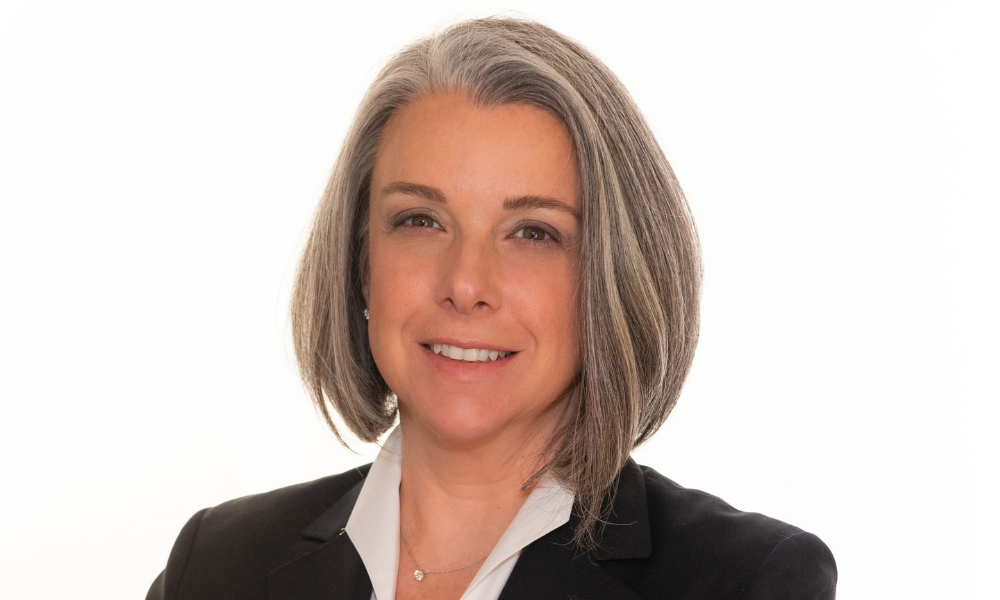

Insurers are feeling the pinch from a social inflation and legal costs phenomenon. Ultimately, they say, it’s the consumer who pays.
Law firms are capitalizing on technology and new ways of funding to drive up awards and drum up business. When cases do reach court, attorneys are using behavioral science to turn juries against defendants. At times, they are generating multi-million-dollar awards. In other instances, technology is being used to build packages of cases, in at least one example driving a judge to despair.
Insurers have struggled to price for the impact of legal tactic changes, across commercial and personal insurance. Collectively, US casualty insurers put more than $1 billion aside last quarter to make up for ballooning past claims costs. But, they say, it’s not just their business that’s being hit by growing legal costs.
The average American household feels the financial pain of “legal system abuse” to the tune of $3,621 a year. That’s according to a recent warning from insurance trade association the America Property Casualty Insurance Association (APCIA) and reinsurer Munich Re.
That’s not just across insurance. The ‘tort tax’, originally outlined by the US Chamber of Commerce Institute for Legal Reform, is said to be hitting consumers across everything from gas prices to groceries.
COVID-driven court delays have kept cases in limbo longer, with protracted litigation having the potential to add to settlement costs or jury awards, ratings agency analysts have told IBA.
In cases, civil court juries have been issuing verdicts for damages in amounts that “rival the annual budgets of small countries, threaten to take down businesses, and provoke spikes in insurance premiums,” Marathon Strategies cautioned in its Corporate Verdicts go Thermonuclear report.
“If you look at the verdicts that we have been seeing in the last couple of years, even if you go back five years prior to the pandemic, those numbers are skyrocketing, the frequency is not going away, it continues and the severity continues to go up,” said Maura Freiwald (pictured below), Munich Re US head of casualty. “Whenever you have to price a treaty or you have to price on risk in the casualty market and US casualty, there’s a lot of uncertainty – it’s predictably unpredictable, and you need a margin for that.”
That margin “adds to the cost of insurance”, Freiwald added, giving the example of insurers chasing rate increases in personal auto to offset the trend across states, including California and Massachusetts.
For some businesses that are already feeling the strain, like trucking companies, Freiwald warned of a “shortage of insurers” willing to provide much needed limits.

Social inflation has “notably affected” insurance across commercial auto, general liability and directors & officers (D&O) insurance over the past decade, as per a recent AM Best report.
“In the US, we are currently right in the middle of a social inflation wave,” said Dentons partner Erika Lopes-McLeman. “It is unclear if social inflation will abate anytime soon.”
Prior to COVID, the average value of nuclear verdicts (generally said to be jury awards of $10 million or more) spiked, according to Marathon Strategies. While pandemic court closures offered an initial reprieve, delays have since kept claims in limbo for longer. Following courts re-opening, the number of nuclear verdicts doubled and the cost spiked from $4.9 billion in 2020 to more than $18.3 billion in 2022.
Among nuclear verdicts in 2023 and 2024, as per Tyson & Mendes’ Nuclear Verdict Tracker:
Law firm Tyson & Mendes has reported there was a multi-million-dollar verdict for every day of 2023.
APCIA and Munich Re surveyed over 2,000 US adults. As per their findings:
• 65% were not aware of a “tort tax” averaging $3,621 annually per household.
• 59% did not know that “third parties, like hedge funds or foreign entities, who have no relationship to the plaintiff, often secretly finance litigation in exchange for a share of the jury award or settlement as a return on their investment”.
• 47% were not aware the plaintiff lawyer in a civil lawsuit is likely to receive most of a jury award or settlement
• 88% believed there should be “full transparency and disclosure of all who have a financial stake in a civil lawsuit”
• 86% agreed state and federal lawmakers should address abuses of the legal system.
In New York State, a coalition including attorney, insurer, restaurant, school groups and now rideshare companies Lyft and Uber is calling for legal reform.
The Consumers for Fair Legal Funding (CFLF) has alleged that a spike in legal funding arrangements (wherein a third party sponsors a claim) has driven up claims costs. This has left insurance companies with little choice but to raise premiums for rideshare drivers, according to the CFLF. The result? As per the coalition, less take-home pay for rideshare drivers and upwards pressure on fares.
Litigation funding was an “esoteric concept” 20 years ago, looked at as an “annoyance or an impediment” when it did happen. That’s according to NY-based Christopher Theobalt, Kahana Feld partner and the author of a recent litigation funding whitepaper.
“It wasn’t the issue that we see now, where you’re probably going to have litigation funding in almost every significant case you encounter in the personal injury realm,” Theobalt told IBA.
Theobalt and the CFLF have acknowledged that legal financing has a role to play when it comes to access to justice. However, concerns have been mooted over transparency of funding arrangements and attention drawn to interest rates. Some personal injury funding firms have been found to charge up to 100% interest on an annual basis.
NY resident Theresa Guss died before seeing any of her anticipated $1.1 million chunk of a $2.1 million 2017 settlement from a lengthy legal case against the City of New York. Guss had taken out two loans from two companies totaling less than $25,000. Kahana Feld calculated these would have been valued at more than $6 million by 2017, factoring in interest. Litigation against the city continued to play out into 2023, around five years after Guss had died.
The longer a case goes on, the more they may have to gain, critics say. This, lobbyists have said, is adding to cost pressure on businesses, consumers and the insurance industry – and defendants may not even know when a funder has skin in the game.
“The crux of the issue is that you’re basically inserting a third party into litigation that is hampering the settlement,” Theobalt said. “Defendants currently don’t have a recognized right to see these agreements and to know what they are, and so they’re unable to chart a litigation course that makes sense, given these obligations.”
It’s not just personal injury lawsuit funders that insurers and defendant law firms are wary of. Commercial and specialist legal finance companies have sprung up in recent years, investing in high-value lawsuits
The commercial litigation finance market committed $2.7 billion to deals last year, as per Westfleet Advisors’ 2023 Litigation Finance Market Report. Both the Department of Justice and the Department of Homeland Security have been looking at alleged transparency issues in legal funding amid hedge fund and foreign bad actor fears, lobbyist sources said. Some state lawmakers, recently in Indiana and West Virginia, have also zoned in and legislated on transparency.
|
Year |
Assets under management |
|---|---|
|
2023 |
$15.2 billion |
|
2022 |
$15.1 billion |
|
2021 |
$13.7 billion |
Source: Westfleet Advisors – The Westfleet Insider, 2023 Litigation Finance Market Report
Senior staff members at three of the biggest commercial litigation funders active in the US denied that legal financing poses a transparency or foreign influence problem when approached by IBA. Rather, they said, it was helping businesses take on corporations in legal action that they may otherwise struggle to fund. They also disputed the legitimacy of APCIA and Munich Re’s survey findings.
“I understand that concerns have been raised,” said Burford Capital managing director Andrew Cohen (pictured below), one of the legal finance professionals who spoke to IBA. “Our sense is that those concerns are disingenuous and meant to create regulation around our industry.”

Funding or no funding, everyday people’s distrust of corporate America has served as fuel to the nuclear verdict fire.
Plaintiff attorneys have tapped into reptile theory to put defendants on blast in the courtroom to get juries on their side. And stakeholders say that insurers and defense attorneys are failing to keep up.
Denise Tyson, founder and CEO of Schaefer City Technologies, launched the business in 2022. The insurance technology startup is looking to tech – Tyson pointed to artificial intelligence (AI) – to combat plaintiff attorneys’ emotive tactics. It can get granular: the business’s team of lawyers report back on how lawyers are changing their language or criticizing a defendant to elicit a particular jury response.
“In the past, attorneys used to try to make the jury feel empathetic or sympathetic towards the plaintiff like, ‘look at what a bad state they’re in right now’,” Tyson told IBA. “What they’ve been doing in the last five years is they get the jury angry – they’re not even talking about the plaintiff anymore.”
Under the influence of legal advertising culture, many plaintiffs do not understand the benefit of a settlement in potentially cutting down their own ultimate legal costs, Tyson recalled from her days working in a senior role in an insurance company claims department.
“You’ve seen the billboards, you’ve seen the TV commercials – ‘you don’t pay unless we win’,” Tyson said.

But billboard and TV spots could be the least of insurers and consumers’ worries when it comes to plaintiff attorney advertising. And while nuclear verdicts may hit headlines, legal technological developments are also hitting insurance lines like personal property.
“From my perspective, the billboards tend to be cute, funny and amusing – they’re like a shiny magician’s object,” said ratings agency Demotech president Joseph Petrelli. “They’re using billboards so that you think, ‘that’s a cute billboard’, and you don’t think about the 10,000 times that they’re working on your phone, or your iPad, or your laptop or desktop.”
Analytics company 4Warn has identified plaintiff law firms and other claims businesses each spending millions of dollars a year on online advertising, using technology to identify opportunities. By building in keywords or snapping up ads, these firms push their websites to the front page of search engines like Google. In cases, they will land above insurers’ claims departments. Insurers have struggled to keep up.
“We call it negative search engine optimization, and it’s the nefarious use of SEO to hijack search intent,” said Todd Kozikowski, 4Warn CEO.
4Warn analysis of data on 15 insurance companies in one state, Louisiana, found firms buying up more than 250,000 pay-per-click keywords:
4Warn identified firms buying up property insurance claims keywords related to 2022’s deadly and destructive Hurricane Ian before the weather event had even hit the coast of Florida. It saw similar activity for 2023’s Hurricane Idalia.
“A few days before the storm hit, when it was still 250 miles off the coast, websites were already established. In some cases, attorneys were saying, ‘file your lawsuit now so you’re first in line,’” Kozikowski said.
Law firms based outside of Hawaii were buying up keywords and releasing claims websites even as the Maui wildfires were still burning last August. This was before people had a chance to assess the damage or reach out to their insurer.
Demonstrating the value some businesses see in this method of advertising, close to a quarter of one major national law firm’s $200 million advertising budget is spent on search engine optimization (SEO) and pay-per-click. Another has a monthly spend of approaching $1.5 million – that’s a 2,900% increase on the $50,000 monthly spend of consumer brand behemoth McDonalds – and its budget has risen since 4Warn began its analysis in 2022.
4Warn, the brainchild of Petrelli and ex-astrophysicist Kozikowski, has identified some law firms using potentially tricky tactics once ads or webpages have been clicked on by a policyholder.
Last year, legal funding-backed Texas-headquartered law firm McLenny Moseley and partners drew the ire of a judge and Louisiana’s former Insurance Commissioner Jim Donelon. The firm faced multi-million-dollar fines after using technology to package up hundreds of hurricane lawsuits, in some cases allegedly without the knowledge of policyholders. 4Warn’s platform flagged early SEO warning signs around the firm prior to the commissioner’s intervention.
See LinkedIn post here.
Firms’ tactics have continued to evolve. In some cases, 4Warn called an advertised number to be told it had reached the claims department, and only when the caller insisted on speaking to a representative of the insurer would the person on the other end put down the phone.
Some may now even advertise a legitimate insurer claims number hidden in their website in a bid to attract policyholders who search for this. Another, different number, will be boldly displayed on the page.
For big insurers, technologically buoyed lawsuits may add to a claims costs headache. For smaller insurers, they could be the difference between failure and survival.
In 2023, United Property & Casualty (UPC) became the 10th insurer to fall over in two years in Florida, where property insurers have felt the sting of some of the country’s highest homeowners’ insurance prices amid a barrage of lawsuits that lawmakers have sought to get a handle on. More than a million policyholders now rest with the state’s insurer of last resort, Citizens, which faces a Senate Budget Committee investigation into its solvency and federal bailout risk.
When it comes to law firms’ tactic changes, if insurers can’t keep up then consumers ultimately bear the costs.
“Policyholders are spending more than ever, and the risk that this hits in their own personal livelihoods, in their families, in their households is very real,” Kozikowski said.
How well are insurers keeping up with legal advancements? Leave a comment below.
